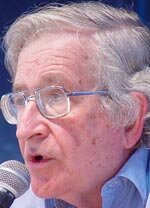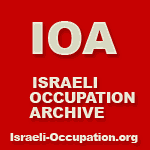Like many of the names that Israel assigned to the new streets in the eastern part of [Jerusalem], the militaristic names that the rapid-transit stops are supposed to bear reflect the situation accurately: occupation.
IOA Editor: As Segev points out, the renaming of streets and transit stops reflects the Occupation. But he leaves a great deal out: The Renaming of Palestine is an important last part of a process, specifically designed to erase the past, thus enabling the re-Making of History as the victor would like future generations to know it. The current story is only the latest example. After 1948, nearly 500 Palestinian villages were removed: not only were they physically obliterated by the then-young State of Israel, but their names were either erased (from all maps and road signs) or “Hebraized” – turned into Hebrew. This is an important, and sinister, element in the historical process generally known as Ethnic Cleansing. For Israel it means This land is ours, and ours alone.
By Tom Segev, Haaretz – 31 Dec 2009
www.haaretz.com/hasen/spages/1139137.html

Tom Segev
The light-rail project in Jerusalem is still far from completion, but the linguist Avshalom Kor is proposing names for the stations along its routes. Five of the 24 stops are supposed to glorify military myths: “Israel Air Force,” “Sayeret Duchifat,” “Yekutiel Adam,” “Ammunition Hill” and “Davidka.” Four of these stops are located in East Jerusalem. Kor is right: Like many of the names that Israel assigned to the new streets in the eastern part of the city, the militaristic names that the rapid-transit stops are supposed to bear reflect the situation accurately: occupation.
Haaretz correspondent Nir Hasson reported this week that Kor is also suggesting Hebraizing the proposed names of two of the other light-rail stops: “Shimon Hatzadik” in place of “Sheikh Jarrah,” and “Givat Binyamin” instead of “Tel al-Ful.” In West Jerusalem, Kor suggests changing the name of the station situated on a main thoroughfare – King George V Street. Kor thinks there is no need to perpetuate the street name that the British conferred in their monarch’s honor, and suggests instead “Bikur Holim,” the name of a nearby hospital. He also refers to the literal meaning of that name, “visiting the sick,” as “an important mitzvah in Judaism.”
After the establishment of the state, several Jerusalem streets named by the British were changed, but King George’s name is still commemorated at the northern end of the street; Tel Aviv and other cities in Israel also honor His Majesty. There is a clear Zionist justification for this: It was during the reign of King George V that the Balfour Declaration was issued – the birth certificate of the State of Israel. Chaim Weizmann was received by the king, and wrote that George had evinced a sympathetic interest in the Zionist project.
In recent years it has become common practice in Jerusalem to black out the Arabic lettering on street signs throughout the city, but such actions are no doubt the acts of racist thugs, not distinguished linguists.

























